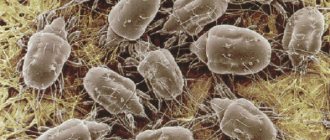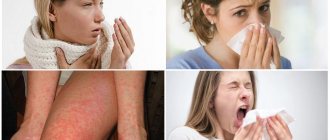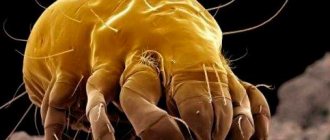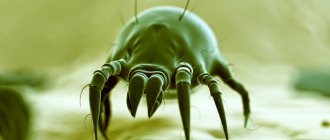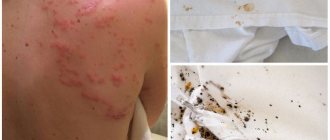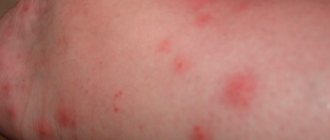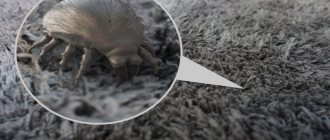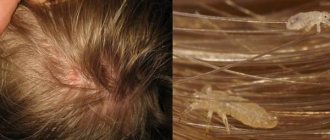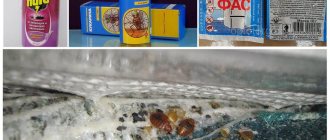Dust mites (otherwise known as house dust mites) are present in every room where a person lives or visits. These synanthropic insects simply cannot live without people, since the main food products of these creatures are dead cells of the human epidermis. In our article we will take a detailed look at what dust mites are and what they look like, and whether they bite people. We'll tell you what methods are best to get rid of them and what preventive measures to take to prevent their further spread.
Description
Dust mites are very small insects (type - arthropods) belonging to the class of arachnids. But this does not mean that they are like a spider in everything. Their limbs are not so long, they are poorly developed, but meanwhile, their strength is enough to move freely. They crawl slowly, constantly looking for provisions, which, in most cases, are dead cells of the human epidermis or the skin of domestic animals.
What do dust mites really look like? Most of all, they resemble bugs if their wings are torn off and their legs are shortened. A special difference is that they do not have a clear division of the body into segments. Their entire carcass, if you can call it that, is a solid “cutlet” (in a reduced form, to a size of 0.1-0.5 mm), slightly narrowed towards the stigma and thickened towards the back of the abdomen. In the front part, the stigma has a pair of small processes, reminiscent of hypertrophied mites, with which the insect sends the edible it finds into its mouth. Some compare them to hippos reduced to microscopic size. This is what a dust mite looks like in the photo, magnified many times over.
They live from 60 to 80 days, during which they manage to go through their entire life cycle, that is, to eat and copulate, after which the female lays up to 60 eggs.
Why and how bed bugs appear at home
There is still no exact answer to the question of where linen mites come from in a person’s apartment. Their appearance and presence do not indicate unsanitary conditions. They even live in places where they monitor cleanliness, regularly change bed linen, wash clothes and shake out bedding. Their population may be so small that people do not notice them.
In homes where cleaning is done poorly, and bed linen is changed once a month or less often, dandruff and dead particles of human skin and hair accumulate in dust and folds of fabric - what bed mites love. Having received food, the parasite begins to multiply, and its population in the apartment increases sharply. A female linen mite lays up to 300 eggs per day. More than a hundred of these adult individuals live in a gram of dust.
Linen mites are transmitted by:
- people (with clothes);
- pets (cats, dogs, birds);
- other insects living in human homes (cockroaches, bedbugs).
Due to the fact that the linen mite can be brought from anywhere, it is impossible to understand how and when it appeared in our house.
It lives in the same place as people, because it feeds on human dandruff, pieces of human hair and particles of dead skin and nails. It is easy to pick up a linen mite from another person, especially an untidy one. This parasite thrives in the folds of clothes that have not been washed for a long time, and in hats.
Dogs and cats, which love to lie in bed and on a person’s bed, carry on their fur up to a dozen different invisible pests, including bed mites. Having met other pets on the street while walking, they exchange the inhabitants of their fur, and the tick ends up in another house, where it begins to look for food.
Important! Cockroaches and bedbugs - companions of unsanitary conditions - carry dirt, infection and dust on their legs and bellies, and along with the dust - linen mites.
Linen or bed mites live where it is warm and dusty, close to food. Habitats can be:
- in soft toys;
- in mattresses;
- on shelves with books;
- in bed linen;
- under furniture where dust accumulates;
- in woolen clothes, blankets and bedspreads;
- in feather pillows;
- in old cotton blankets.
The tick also loves carpets and rugs made of natural pile, curtains and furniture upholstery. That is, all those places where people cannot reach during cleaning.
What is dust and why do dust mites live in it?
This will come as a shock to many, but more than 20% of room dust consists of particles of the dead upper layer of skin, called the epidermis, flying off us. Moreover, the more people live in an apartment, the richer the content of skin flakes in the overall mixture will be. In addition to them, the household dust suspension contains:
- smoke particles (soot) 3%;
- fibers of various fabrics and paper – 12%;
- various types of mineral particles – 34%;
- flower pollen – 6%;
- other pollutants (fragments, flakes of animal hair, fluff, etc.) – 25%.
In winter, accordingly, there is less flower pollen, but there is more clothing, and therefore this 6% migrates to what falls off from winter outerwear. This is what dust looks like under a microscope.
Consequences of an encephalitis tick bite - symptoms of tick-borne encephalitis
The latent period is 5-25 days, but most often symptoms appear in the period 7-14 days after the tick bite. The general symptoms characteristic of this infection begin acutely and vividly, i.e. The patient can clearly indicate the start time of the clinic:
- heat;
- chills;
- Pain in the eyes;
- photophobia;
- pain in muscles, bones and joints;
- headache;
- vomit;
- lethargy and drowsiness;
- seizures (in children);
- redness of the sclera of the eyes, skin of the face, neck, upper body.
Favorite places to live
The more carpets, upholstered furniture and other textile decorations and interior items there are in the house, the more and faster dust will form in it. For example, carpets are a favorite habitat for dust mites. A huge amount of “provisions” always settles on them. The next photo shows dust mites that feel great among carpet textile fibers.
Separately, it is worth mentioning feather and down pillows, as well as mattresses. Scientists managed to have a hand here too, calculating that up to two million dust mites constantly live in an ordinary average double bed. And feather and down fillings, if there is a lack of food, can themselves become food for these microscopic creatures.
Household and other appliances deserve a special mention. Old monitors, stereos and DVD players are potential cities and breeding grounds for dust mites. There is always a lot of dust among the microcircuits, capacitors, resistors and other radio equipment, but if there is a lot of dust, and no one cleans it out for a long time, mites live in it especially freely.
Can dust mites be seen with the naked eye?
When asked what a dust mite looks like with the naked eye, we will answer that these creatures cannot be seen even under a magnifying glass. On average, the size of ticks is 0.2 mm, which means that without special equipment these creatures simply cannot be detected. And the way dust mites look under a microscope causes horror and disgust for many. These are pests with a repulsive appearance, and from their very appearance it becomes clear that nothing good can be expected from them.
Differences between bedbug bites and other parasites
The skin reaction after damage by any ectoparasite has common characteristics: redness and itching. To recognize a bug, you need to know the subtleties of its behavior and habits in comparison with other insects.
Mosquitoes and bedbugs:
- The mosquito buzzes before it bites, the bug is silent.
- A mosquito bites at any time of the day, a bug bites at night.
- The mark of a bedbug bite has clear contours, while that of a mosquito bite is a blurry spot.
- A bug's bites are in a path, while a mosquito's bites are chaotic.
Ticks and bedbugs:
- The tick wound is much larger.
- The tick bite hurts more.
- The tick can be detected visually as it remains under the skin.
Fleas and bedbugs:
- A bedbug bite is bright red and swollen, while a flea bite is simply spotted.
- Traces of flea attack are mainly on the legs and are randomly located.
Midges and bedbugs:
- The midge attacks on the street, the bug attacks at home.
- Bedbugs pierce the skin, and midges gnaw.
- A midge bite causes immediate, sharp pain.
- Midge lesions take at least a week to heal.
Sensitive people may experience an allergic reaction to the bedbug's salivary enzyme, including anaphylaxis. Especially if the parasite colony is large and there are many bites.
Dust mites from a medical point of view
Let's now look at the problem from a medical point of view: what is a dust mite? And how to get rid of it? And in general, is this possible? Let's start with the first question. Doctors warn that dust mites are harmful pathogens of bronchial asthma. They can often be carriers of other dangerous infections. In addition to bronchial asthma, they can also cause:
- conjunctivitis;
- rhinitis;
- respiratory allergy;
- allergenic dermatitis;
- Quincke's edema.
Any reaction of the human body to the effects of mites and the enzymes they secrete is summarized under the single name “mite sensitization.”
How to get rid of linen mites
The range of means by which today, as a rule, the destruction of linen mites at home is carried out is quite wide. True, no one today knows the absolute answer to the question: linen mites and how to get rid of them. The various methods of combating linen mites that are well known today are divided into several groups.
- Physical
- chemical
- folk
The use of certain means is always the result of the choice solely of the owner, as well as the inhabitants of a particular premises. The drug is also determined by a number of special circumstances.
In general, removing linen mites on your own at home is done in almost the same way as its more specialized version. The person himself determines the size of the surface to be treated with chemicals. In some cases, treating the sofa with drugs alone will be enough to quickly obtain the desired final result. This measure will be most appropriate only if there is a low infestation of housing with linen mites or if the apartment area is very small.
Limited family budgets or very high prices for specialized services may also influence the choice of tick control methods. In any case, no matter what method of exterminating linen mites is chosen at home, one must remember that insecticides are also poisonous to humans and can cause a variety of allergic reactions. There are cases of quite severe poisoning due to the incorrect use of such chemicals, as well as violation of safety precautions when working with them. Under no circumstances should these actions be performed by people who are prone to various allergic reactions, as well as by children, nursing or pregnant women.
Temperature treatment of the room
Linen mites, unlike most known parasites, are able to live in a wide range of temperatures. These insects are resistant to very low temperatures, withstanding short drops in temperature down to -20 degrees. True, if linen mites attacked your home in a cold winter, then individual elements of furniture (shelves, mattresses, chairs and tables) can be left outside for a couple of hours and frozen well. But it is worth understanding that the dangerous risk of reappearance of linen mites from such procedures, alas, will certainly remain.
You can effectively freeze the room completely by leaving the windows open for a day or two. But such measures may well disrupt the functioning of various plumbing systems. Heating can eliminate linen mites much faster, but not everything in the house can be treated at very high temperatures - 50 degrees or more. However, most of the different areas of potential accumulation of linen mites can be treated with special dry heat or steam, and it is this treatment that is considered the most effective today. With such treatment, even the eggs of linen mites, which are considered the most resistant to various types of bullying, are necessarily killed. A good option for treating things, beds and carpets using temperature in the summer is a regular car. You just need to put all your things in it, close the windows and leave it in the hot sun all day. If the temperature inside the car rises above 50 degrees, all linen mites in things will soon die within a couple of hours.
Folk remedies
Among the various methods of exterminating linen mites at home, there are many that were used by our ancestors even before the production of all kinds of synthetic insecticides. Among such means known today are: vinegar, turpentine, cresol, kerosene and denatured alcohol. Each of them, as part of complex solutions or in pure form, can be applied every day to the suspected or infected habitats of linen mites in the apartment for quite a long period of time. Moreover, mixtures based on turpentine or kerosene with the addition of camphor or naphthalene can be used for high-quality treatment of nooks and crannies of wooden furniture, baseboards and floors. It is advisable to use plastic gloves or bags rather than rubber ones.
This is due to the fact that these chemicals corrode fairly thin rubber products. Carpets and upholstered furniture can easily be ruined by such products, since their oily base leaves stains and stains and greatly disturbs the color of the upholstery. For high-quality treatment of fabric surfaces, solutions of acetic acid, denatured alcohol or ethyl alcohol are usually used. For example, approximately 5 grams of naphthalene are dissolved in one glass of denatured alcohol, which, if unavailable, can be replaced with 70% ethyl alcohol. The room treated with anti-tick agents will have to be left for a certain time, optimally - for the whole night or at least for 8 hours. The rather pungent smell of these products will still not allow you to sleep normally.
Another way to eliminate linen mites at home is to use herbs such as tansy and wormwood. It is believed that these plants repel parasites with their smell. Their aroma is really strong and unpleasant. But in order to exude it, the herbs must be fresh, and this, unfortunately, does not last very long. Thus, for a short time the aroma will still repel linen mites, without killing them or preventing them from reproducing normally. That is why such herbs are used in conjunction with some other options for baiting uninvited guests or to prevent their easy penetration into the home. Traditional methods are usually the least effective of all. You definitely shouldn’t count on absolute removal of linen mites with their help at home.
Professional processing
No one today knows 100% of the strategy for how to get rid of linen mites in an apartment, while spending little money and time.
No one knows the full answer to the question: linen mites and how to get rid of them. If your premises are very heavily infested, it is better not to waste time and energy, but contact organizations that are engaged in the professional elimination of linen mites. This will save both your time and your money. Today there are quite a lot of companies that offer their pest control services. cold fog generator Their choice should be approached very responsibly. All those chemicals that they usually use belong to a special category of insecticides; they must be certified in the system of the State Standard of the Russian Federation and Rospotrebnadzor, and also belong to the so-called low-hazard substances of the fourth group. Firms that combat linen mites offer the elimination of parasites using special ULV generators. Thanks to their use, it is possible to reduce the amount of insecticide used. Therefore, it is possible to carry out such disinfestation completely safely.
The total duration, as well as the effectiveness of the final result, depends on the correct execution of the destruction. Disinfection by experienced professionals is the fastest and most guaranteed option for getting rid of ticks and their larvae, which are quite difficult to kill at home. Often, those companies that specialize in treating houses and apartments remove linen mites in one go. Moreover, regardless of the dimensions of a particular room. In case ticks are detected after treatment, a reputable service always guarantees a free repeat procedure. The disadvantage of such a fight against linen mites is the complete isolation of the house for the duration of exposure to the insecticide: this is usually 7 hours. All its inhabitants must be evacuated from the house, various personal hygiene items and dishes must be tightly packed. However, you will no longer have to think about the question: linen mites and how to get rid of them.
Do dust mites bite?
We have already seen what dust mites look like. From the photos provided, it becomes clear that they do not have “biting” organs as such. In everyday life, we are used to calling a bite - pricks with a sting (for example, a mosquito), pinching the skin with the front claws on the snout (some spiders, forest mites, meadow mites, beetles), etc. But this does not apply to dust mites. Even if they have a hole with some kind of mandibles, with which insects absorb all the same scales of the upper layer of the epidermis that once fell off a person, then they are simply not able to bite the skin tissue with them.
They will not be able to pinch her in any noticeable way. These creatures are so tiny that any of their mechanical effects on the epidermis will be unnoticeable from an anatomical point of view. By their effects on skin tissue, they will not be able to excite more than a single nerve receptor in the human body, regardless of its location.
Plus, dust mites can only digest particles of dead epidermis. Living skin is not food for them. In scale and biological proportions, a tick bite can be compared to what it would be like for a person to want to bite the thigh of a boar that is 100 times larger in size. Firstly, the material is too rough - not suitable for human teeth, and secondly, the surface tissue of a boar's thigh will not be suitable for food.
But some may protest, they say, we’ve all seen what dust mite bites look like, so where do they come from if mites don’t bite?
Clothes mites photo
Those people who have never had these insects at home should definitely know about the great harm that linen mites cause to humans. This can push them to quickly and timely destroy these parasites. The harm from linen mites is, in fact, extremely great. In addition to the fact that they feed on human blood in large quantities, they also secrete poisonous saliva into the victim’s body. As a rule, it does not cause any irritation, but sometimes linen mite bites, their symptoms, and consequences are very unpleasant.
This slideshow requires JavaScript.
A slight swelling of the skin at the site of the bite, inflammation, and itching and pain begin. Subsequently, nervousness, lack of sleep, malaise may appear, and the human body significantly reduces its performance. All this, as a rule, is reflected even at the psychological level, gradually worsening the situation.
What is a dust mite bite?
Dust mite bites are popularly known as redness that appears in places where human skin has been exposed to the enzymes they secrete, which permeate the feces of microscopic insects. Each tick can “go to the toilet in a big way” 20 times per day, so on the scale of a double bed this will be a real disaster for a person in whom this enzyme can cause an allergic reaction.
Usually people have a strong immunity to this substance. But there are still exceptions. In addition, there are many varieties of dust mites themselves, and it is possible that feces of a certain variety may not be “suitable” for some person.
External signs of a bite
Detecting uninvited guests is not so easy due to their microscopic size. The parasite cannot bite a person, since its jaws are weak and not designed for this. When interacting with arthropods, a person experiences an allergic reaction. Irritation is a response to contact with mite feces.
Not everyone knows the signs of bed mites, so people may confuse them with other pests. The characteristic “bites” are a bit similar to mosquito bites - multiple red bumps appear on the victim’s skin. The rashes always follow a path at a distance from each other. The affected areas are very itchy.
Main symptoms of contact with ticks:
- rash;
- cough and runny nose without ARVI or acute respiratory infections;
- redness of the eyelids, inflammation of the mucous membrane of the eye, tearing;
- sometimes difficulty breathing and fever.
In rare cases, bed mites lead to a severe allergic reaction and angioedema, which can be fatal. Before you start treating irritation, you need to start removing parasites.
Who should be most concerned about dust mites?
People with asthma and children are most often susceptible to tick-borne sensitization. If a child, for no apparent reason, suddenly starts coughing and develops a runny nose, and there are no outbreaks of diseases around, most likely the reason is the baby’s body’s reaction to the presence of too many dust mites in the home.
Also, symptoms of dust mite allergy in children are pronounced redness on the child’s skin (dermatitis) that appears out of nowhere. There is no need to be afraid of such irritations, since modern medicine has easily learned to cope with such allergic manifestations. A photo of dust mite bites on a person’s body looks quite unpleasant.
If you notice similar irritation on your child’s skin, this means that the number of insects has exceeded all permissible limits and it’s time to take house cleaning seriously, arranging a real Armageddon for uninvited roommates.
Signs of bed mites in your home
Tick excrement contains a protein that can cause allergies. As soon as symptoms of an allergic disease appear, you need to get tested and consult a doctor.
Read more ► Where do ticks live, ixodid ticks, subcutaneous ticks, house ticks, laundry ticks, what is the danger?
The main symptoms of allergies include:
- Rash all over the body.
- Unbearable itching.
- Swelling of the eyelids.
- Frequent nasal congestion.
- Loss of appetite.
- Unreasonable frequent attacks of coughing and sneezing.
Destruction measures
In a specialized store you can find a wide variety of products that can help get rid of ticks that have multiplied in your home. In most cases, these products are sprays that are completely safe for humans, but at the same time, lethal for hated insects.
They should be used to treat mattresses, pillows and blankets. The removed bedding can be soaked in hot water so that all the creatures nesting in it can die. The most comfortable temperature for these insects is 15-25 °C. Frost or high temperatures are fatal to them.
Special cleaning products in the form of concentrated shampoos are produced for treating carpets and rugs. If you wipe floors and other surfaces with a solution of such a product, as well as clean carpets, all the pests inhabiting them will certainly go to the next world.
Be that as it may, no remedy will help you get rid of dust mites 100%. But it is possible for humans to reduce the insect population to a safe minimum.
Folk recipes
Some people are afraid to use chemicals. In this case, you can remove the ticks using improvised means. To do this, take 25 ml of liquid soap and dilute it in a liter of clean water. Half a glass of ammonia is also added there. The resulting mixture is thoroughly mixed. All rooms are treated with it and used for washing clothes.
Parasites do not like some plants, so dry bunches should be distributed in areas where ticks live. Tansy, wild rosemary, and wormwood are suitable. Vinegar, boric acid or turpentine are used as floor cleaners. They are bred in a bucket of water. To prepare a concentrated solution, 1 teaspoon is enough.
Prevention
To prevent pests from breeding again, basic preventive measures should be followed. Here is a list of actions that will help keep the dust mite population under control:
- A general wet cleaning should be carried out weekly in each residential area. If you don’t want to spend money on special products, you can splash a little vinegar essence into a basin or bucket of water. The smell will go away within an hour, but the creatures will die with even greater intensity.
- All upholstered furniture must be thoroughly vacuumed. The disadvantage of ticks is their light weight and clumsiness. They don't run away from a vacuum cleaner like rats. Moreover, due to their underdeveloped minds, they will not at all understand how such a cruel relocation to a landfill befell them. They nest mainly in the upper layers of upholstered furniture, since there is no food for them inside the upholstery. Therefore, a larger number of their “personnel” will definitely be collected with a vacuum cleaner.
- In the summer, take pillows, blankets and mattresses out to dry in the sun. Not only that, insects will die from excessive overheating, but ultraviolet radiation itself is also destructive for them. In a few hours of such a “sunbath”, your bedding will get rid of the lion’s share of the total number of ticks nested in them.
- In winter, in sunny, frosty weather, your laundry taken out into the fresh air will be completely free of every single tick. If the sun was unable to penetrate inside a down or feather pillow in the summer, then the frost will certainly penetrate it to the ground.
We should not forget that the fewer stale things, carpets and other products, small parts, hard-to-reach cracks and old household appliances in the apartment, the less number of breeding grounds you will have that produce ever new hordes of mites. Get rid of everything unnecessary, and you, without any doubt, will breathe easier, and this was said in the literal sense of the word.
Effective methods for treating bites
Many people's bodies respond adequately to bed tick bites, and they heal on their own within a few days. There are people who need emergency help because their body reacts in a very specific way. For atypical reactions it is necessary:
- Wash the bite areas thoroughly with soap or soda solution, then rinse them with clean running water. To prepare the solution, take a glass of water and add a spoonful of soda or liquid soap.
- Bite areas must be disinfected with any alcohol-containing product, such as vodka or moonshine, cologne or perfume.
- Severe itching indicates an allergic reaction. To reduce these symptoms, you can use both pharmaceuticals and folk remedies.
Folk remedies
There are a number of effective and proven recipes. For example:
- Bite areas should be wiped with pure vinegar. There is no need to rinse the product.
- You can apply a piece of ice or some product from the freezer to the bite site.
- Applying a used black or green tea bag to the bite site will relieve the victim of discomfort.
- Lotions are also made from medicinal herbs. St. John's wort is considered the most effective remedy. To prepare the solution, you need to take a spoonful of St. John's wort and pour a glass of boiling water. After the infusion has cooled, soak a cotton swab in the infusion and apply it to the wound for half an hour. Herbs such as chamomile or calendula are suitable. The product is prepared in the same way as St. John's wort base.
- Treatment with a composition based on aloe and plantain. After mixing the ingredients, the wound is treated several times a day. The juices from these plants help reduce swelling of the bite site, reduce itching and have an antibacterial effect.
- Onion and garlic juices in combination act in a similar way on the bite site. The smell of onions and garlic, in addition to relieving discomfort, also helps repel these leeches.
- You should drink at least 5 tablets of activated charcoal to flush out toxins from your body as quickly as possible.
As a rule, folk remedies help a person cope with negative consequences in the initial stages. If these remedies do not cope with the task, then pharmacies should be used. Alternatively, you can use essential oils, which have the same effect as herbal infusions.
Essential oils of such plants are recommended to be used as:
- Lemon.
- Orange.
- Lavender.
- Geranium.
- Tea tree.
- Needles.
- Juniper.
- Cypress.
- Sage.
- Mint.
Medications
There are both special remedies developed for the bites of various insects, and non-special ones that cope with this task. The fact is that each body reacts differently to bed tick bites.
Typically the following pharmaceuticals are used:
- Special ointments “Fenistil” and “Rescuer”. These remedies have a wide spectrum of action and help protect the victim from negative consequences.
- Vietnamese star, which is characterized by an antibacterial effect.
- Afloderm helps cope with severe itching.
- Propolis tincture is effective against any bites.
- Afloderm ointment is used with Tavegil, which helps relieve the symptoms of allergic reactions.
- The chatterbox “Tsindol” will easily cope with the task.
- Akriderm perfectly relieves signs of inflammatory processes.
